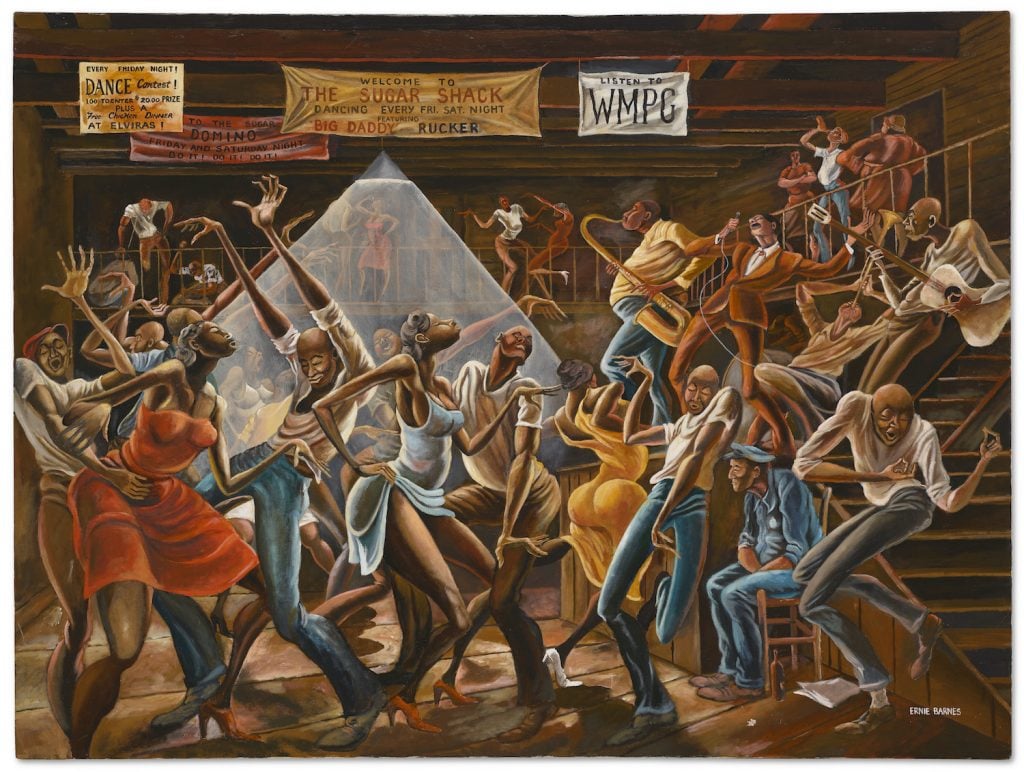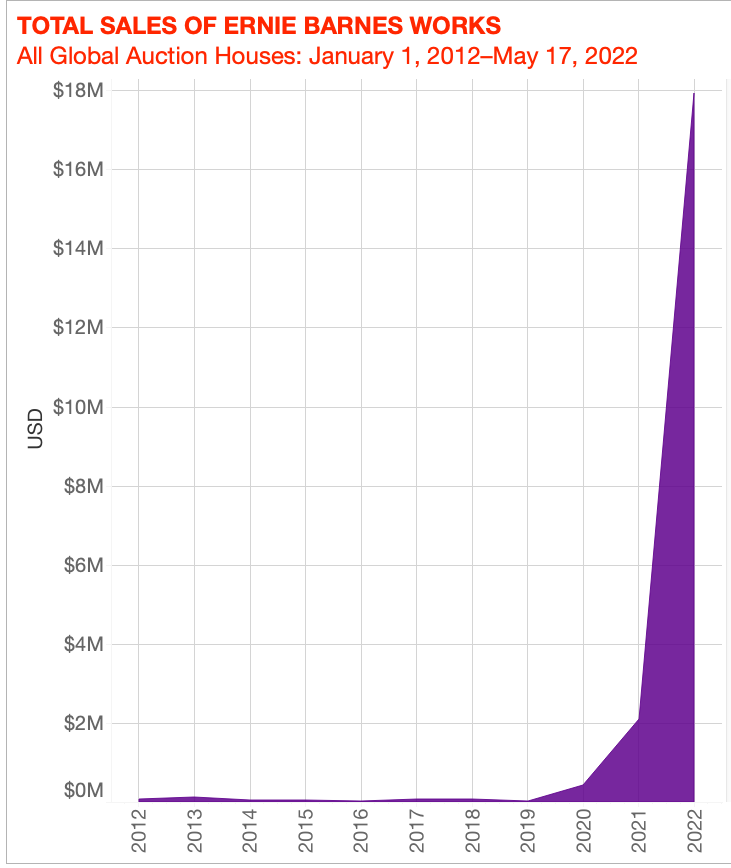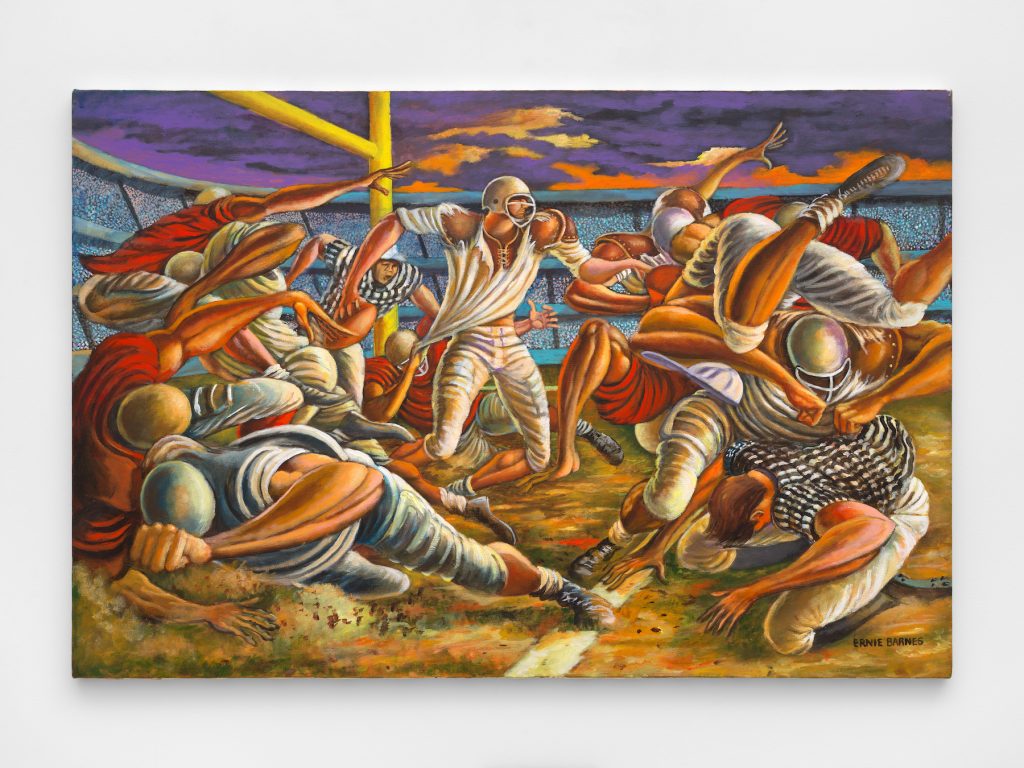The Appraisal
After a $15.3 Million Auction Sale, Ernie Barnes Collectors Might Soon Try to Cash in. Can the Market Survive a Flood?
We took to Artnet’s price database to investigate.

We took to Artnet’s price database to investigate.

Naomi Rea

A painting by artist and former NFL player Ernie Barnes stole the show at Christie’s 20th century evening sale last week. Fierce competition for the 1976 work, The Sugar Shack, drove the price up to 76 times its high estimate, an astonishing $15.3 million. The painting, which appeared on the cover of Marvin Gaye’s 1976 album I Want You and in the 1970s television show Good Times, depicts a joyful crowd dancing to live music.
Barnes is known for his vibrant paintings of African American life in his signature “neo-mannerist” style, depicting elegant, long, fluid figures with almost balletic limbs.
Off the back of the sale, it was announced that Barnes’s estate would be represented by New York galleries Ortuzar Projects and Andrew Kreps, which co-organized an exhibition of the artist’s work last year. Artnet News’s Katya Kazakina also revealed that Ortuzar Projects owner Ales Ortuzar was actually the consignor of The Sugar Shack, suggesting that the market moment for Barnes might have been more carefully orchestrated than it appeared.
We took the opportunity to appraise Barnes’s sparse market history from the Artnet price database. Here’s what we found.
Auction Record: $15.3 million, achieved at Christie’s in May 2022
Barnes’s Performance in 2021
Lots sold: 15
Bought in: 2
Sell-through rate: 88.2 percent
Average sale price: $139,494
Mean estimate: $38,467
Total sales: $2 million
Top painting price: $550,000
Lowest painting price: $14,000
Lowest overall price: $14,000, for the painting Race Day.

© 2022 Artnet Worldwide Corporation.

Ernie Barnes, Cool Quarterback (1991). Courtesy the Estate of Ernie Barnes, Andrew Kreps, New York, and Ortuzar Projects, New York.
The steep incline of Barnes’s market over the past three years can be attributed to the perfect storm of factors: securing gallery representation and players vested in developing a coherent market strategy, met with wider trends of reappraising overlooked artists from the past century; and increased interest in narrative and figurative art.
There will no doubt be a flood of Barnes works coming to auction from other collectors wanting to cash in, and it remains to be seen whether the market could survive a shake out.
Several lots worth watching will hit the block on Thursday, May 26, including a 1971 work titled The Maestro, which will probably blow past its high estimate of $35,000 when it comes up at Bonhams New York. Meanwhile, Christie’s Hong Kong will offer Listen Up (1980) with an estimate of HKD$800,000–HKD$1,200,000 ($101,912–$152,868), and there’s no telling what will happen when the rising market meets the competition from Asian bidders. The sales will no doubt create extra marketing power for the joint exhibition Kreps and Ortuzar are planning for 2023, and UTA Artist Space has also announced an exhibition in Februrary 2023.